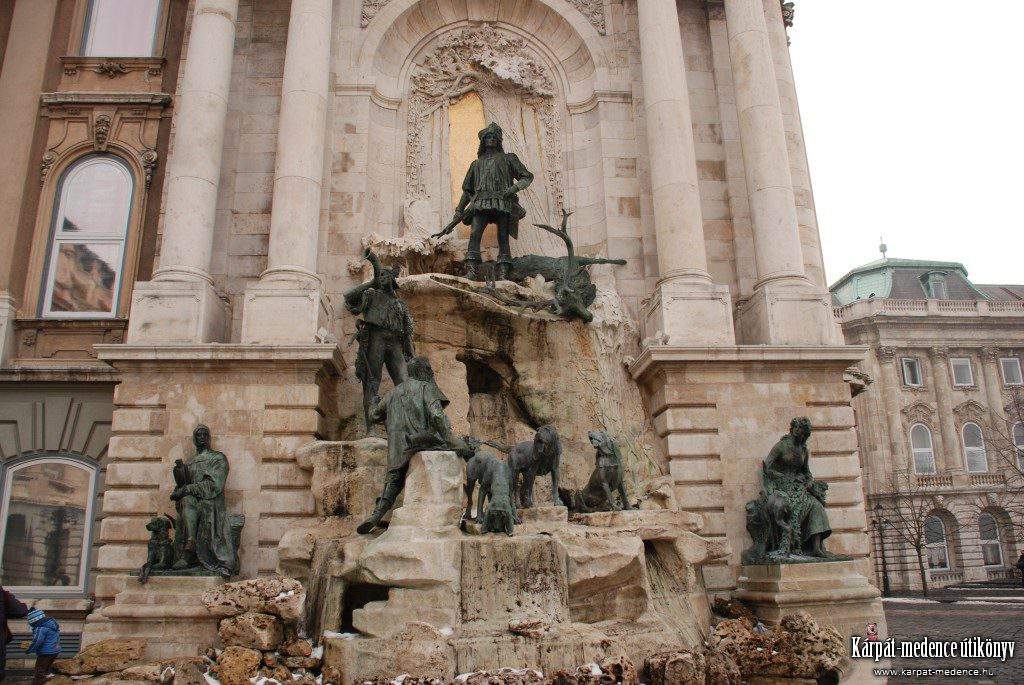Budapest in Hungarian literature: the city of adventures, beauty and disillusionment
If they could talk, the streets of Budapest could tell thousands of stories about love, friendship, goodbyes and new hopes that happened in real life. However, they are also infused with literature and the city is the main character in several Hungarian stories.
Pestbuda has collected some of the most touching stories in which Budapest played a big role, presenting a portrait of the Hungarian city through the eyes of the most prominent Hungarian writers and poets.
The city of adventures
The story of Toldi by János Arany is known by every Hungarian: Miklós Toldi is famous for his great strength and good heart, and comes to Budapest to save his honour and to do good for the murder that he has accidentally committed. After having fled his village in the Great Plain, he is amazed by the hills of Buda and the Buda Castle:
A bright moon is shining on the streets of Pest,
chimneys gleaming high in the moonlight. The roof-
tops huddle below shingling in shadow almost all
the walls. You would think they live in attics, and
that is why they raise the roofs so high, wall on
wall and the top twice begun anew.
In this epic, Budapest is not only the place where Miklós’s honour is restored thanks to his bravery and humility,
but also the city where he made a fortune, became a well-respected man and proved his worth through a series of heroic deeds, like fighting a raging bull on the loose that kept the citizens of Budapest in terror.
The city of disillusionment
Arriving to Budapest from the countryside does not always end in smiles. The poet Mihály Vörösmarty in Szép Ilonka (Beautiful Ilonka) puts his heroine, Ilonka, through many hardships in Budapest. Ilonka is a naive, innocent and pure-hearted girl from a small village, who gets invited to Buda, to the courts of Matthias Corvinus by an unidentified hunter. She comes to the city with her grandfather:
Peterdi and his grandchild sweet
go up to visit Buda-town.
The old man’s wonder is complete
to see new mansions of renown.
The maiden waits in anxious pain
to meet her handsome youth again.
However, they soon find out that the hunter was the king himself, so feeling lied to and betrayed, they return to their remote little house without actually going to the castle.

The bridge of suicide
A year after Margaret Bridge was inaugurated, János Arany wrote a ballad featuring it in 1877, supposedly based on the urban legend that freshly built bridges are inaugurated by suicidal people, but there are some who claim that there were suicide-jumpers on Margaret Bridge too. This is confirmed by news reports from that time.

In Arany’s view, people turned to suicide as a last resort to break free from the hardships and hopelessness of living in the capital city.
In the ballad, people are jumping into the Danube right after one another, to finally be relieved from their problems:
a couple who cannot be together, a creditor whose owes are not paying him back, a lottery addict with no luck, a disillusioned commoner whose honour was stained, a poor but honourable old man, a wealthy woman who grew tired of the obligation to be pretty at all times, a cuckold, and many others.
An hour goes by, many stories meet their ends, and suddenly, the bridge becomes empty.
The city of beauty
Dezső Kosztolányi was easily one of the best Hungarian novellists, and through the eyes of his hero, Kornél Esti, we get to see what the turn-of-the-century Budapest looked like. Kornél is from the countryside too, whose impressions of Budapest were roughly the following:
„With the map of Budapest in his hands, he found the Danube and the Gellért Hill. The Danube was large, the Gellért Hill tall. Both were beautiful. Pest was usually beautiful.”
Budapest is presented through the eyes of several of Esti’s friends, like that of Pál Mogyorósi, who was born and raised in the city: „As he got off the train and glanced at Vérmező and the Gellért Hill at half past one, his heart was overtaken with unspeakable and warm joy”. After this, Pál took a walk at the Buda Castle, ate at a confectionery and walked to Pest, where he met with his friends.

They have spent most of their times at a coffee house, after which they roamed the city which was throbbing at that summer night with city lights.
The mesmerizing Kálvin square
Another great Hungarian novellist, Géza Csáth, guides us through one day at Kálvin square in his short story At the Kálvin Square. The story captures the events at the square from dusk till dawn with vivid details.
We start the day at a chosen location, at a coffee house nearby, from where we can behold the whole square. The writer gives us instruction ceaselessly on where to look: ’Now we look to Baross street’, ’They are opening the shops now’, ’A maid rushes by at the coffee house’s window’.
The square is throbbing with people at the turn-of-the-century too, just like today.
Early in the morning, however, the square is vacant, only the employees of the coffee houses and restaurants can be seen, along with those taking the tram. As time passes, though, more and more people fill the square, in a rush to work: policemen, farmacists, workers, chestnut-men, sewing-maids, university students, doctors.
Suddenly, the Protestant church’s clock strikes twelve: ’By the time they ring the noon bell, Kálvin square becomes a frenzy of pedestrians, rigs, trams, carriages, among which the maidenhair in the policeman’s hand and the red flag of the railman are waving, as if they have lost hope…’.
In the afternoon hours, the square grows calmer, only to start again even louder and livelier than before.





